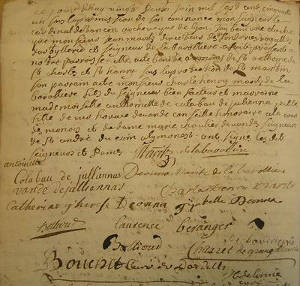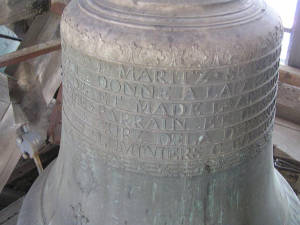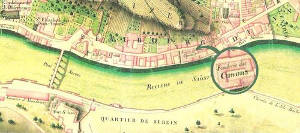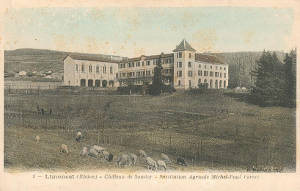There are three beautiful bells at Limonest
The bell tower of our church houses three bells that have punctuated the lives of generations of the villagers for more than 250 years ; to inform the time or church services, to fix important moments such as baptisms, weddings and funerals, the bells can be heard. The bells all have their baptism records engraved in the bronze.
Antoinette is the oldest, Jean Maritz, cannon founder and lord of the Barollière gave it to “Lymonest” in 1751, it is also the heaviest weighing nearly 600 kg, it measures 75 cm and it rings in F sharp ; its godfather was Henri Maritz and its godmother Antoinette de Colavaux de Juliénas, the priest Delorme blessed it ; at the time, the leaders of the parish were C. Bouricant and J. Bressan. Antoinette is beautifully decorated, in addition to its civil status it has friezes, Maritz's coat of arms and an illustration of Saint Martin. During the Revolution it was lucky that it was not melted down ; then, on June 8, 1817, the alarm bells rang to call for an insurrection against Louis XVlll, but the Limonese people did not react and did not answer Antoinette's bell calls. In 1845, it was removed from the old church at the top of the Chemin des Roches to be installed in the current church.
Antoinette was joined in 1873 by two other smaller bells.
Marie-Louise was created in 1873 and is a beautiful 400 kg bell who peels in G sharp, it was created by the foundry man Burdin Aîné in Lyon. It was blessed by Marie-Louise Alban Gaillard born in Neuvesel as godmother and Gabriel Gonin as godfather ; the latter at 63 years old is a very rich landowner who lives in Mathias. He contributed 3,000 francs for the construction of the church in 1843. Marie-Louise has a carving of the Virgin Mary.
Finally the smallest, Blanche, who weighs only 280 kg ; it is 10 cm shorter and was also created also Jean-Claude Burdin, it rings in A sharp. Its godmother was.
Its godmother was Blanche Augustine Lucie Roux de Bezieux, who lives in the Château de Sans-Souci and Mayor Claude Antoine Boin as godfather, who is 64 years old and a farmer like his father Antoine.
The bells have now rung during two wars, but also for the return of the prisoners in 1945. The bell tower, the ladies' house, has been recently renovated, let's hope they will continue to watch over from above the life of the people of Limonest for a long time to come.
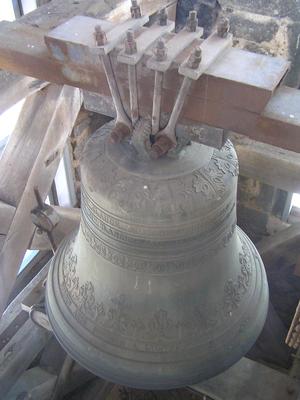
Blessing of Antoinette in 1751
Transcription of the baptism certificate
“On this day of June 22, 1751, with the permission of His Eminence the Cardinal of Tancin, Archbishop of Lyon, I blessed a bell that Mr. Jean Maritz, director of the Royal Foundries of Artillery and Lord of the Barollière presented to our parish, it was blessed in the name of Saint Anthony, Saint Charles and Saint Henry under the protection of Saint Martin, its godfather was Mr Charles Henri Maritz de la Barollière son of the benefactor lord and godmother Miss Antoinette de Colabau de Juliénas, granddaughter of Mr Horace de Vande honorary advisor at the "court of monnaies" and lady Marie Chaulier de Vande lords of Saint André du Coin in Limonest, have signed the said lords and ladies.”
| Maritz de la Barollière | Antoinette Colabau de Julliennas |
| Deonna Maritz de la Barollière | Vande de Julliennas |
| Charles Henry Maritz | Catherine Thérèse Deonna |
| Isabelle Deonna | Bollioud |
| Laurence Beranger | Bollioud |
| Bourricand | Charret de Grange blanche |
| Bouchet priest of Dardilly | J.B. Delorme priest |
On this day of June 22nd, 1751 :
Jean Maritz is a fulfilled man, a bell, which he has just offered to the parish of Limonest, will ring his success.
But why offer a bell ?
By this generous gesture he wants to introduce himself to the inhabitants of Limonest :
- He is a good Catholic ; originally from Geneva and from a Protestantfamily, it is necessary to certify his allegiance to the Holy Catholic Church : the coming to the ceremony of his two religious sisters-in-law confirms the fact.
- He has been Lord since last year, after his purchase of Château de la Barollière on November 8, he signed the baptismal certificate of the bell with his new name : Maritz de la Barollière. He also invited the Lord of Saint-André du Quince, whose granddaughter is the godmother of the bell.
The canon founder had to melt a bell ; not surprisingly, his ancestor Conrad Maritz was a bell smith, and several bells around Geneva were melted by the Maritz, that of the castle of Rochefort in Moudon in 1731 by Jean Maritz, that of the temple of Chêne-Bougeries in 1739 by Samuel Maritz his brother.
Moreover Antoine Frèrejean and his descendants, who will rent the former royal forge of Maritz in Vaise to build the famous Pyroscaphe in 1783, did they not then manufacture cannons by melting bells during the revolution, then bells by melting cannons in 1819 ?
Who are the signatories of the act ?
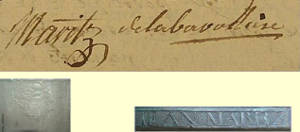
Jean Maritz de la Barollière
To all lords, all honour, Jean Maritz de la Barollière signs first. He was the son of Jean Maritz (1670-1743), the inventor of a machine for horizontal cannon drilling.
Born in Burgdorf in 1711, he arrived on May 2, 1734 with his father to manage the Lyon cannon foundry at Vaise on the banks of the Saône. In 1738, he became a foundry man in Strasbourg, one of the two largest royal foundries and Maritz left Lyon with his machine for Strasbourg in 1740.
In 1742, Jean senior left Lyon for Geneva and Jean junior was the head of the two foundries. In 1746 his machine was installed in Douai in the north. On September 30, 1747 François- Simon Berenger, master foundry man in Douai, died, his son Jean-François, who was 22 years old, replaced him and was trained by Jean Maritz. On November 8, 1750, the latter bought the Barollière for 65,000 pounds, in 1751 he was in Strasbourg and then left in 1753 for Rochefort and Ruelle.
On June 21, 1755, he obtained his knighthood as a knight of Saint Michael. He returned to Strasbourg in 1760, then went to work in Spain, in 1765, in Barcelona and then Seville, King Charles III appointed him camp marshal with a salary of 30,000 pounds.
In 1764, he bought the Château de la Rigaudière in Saint Julien in the Beaujolais.
In 1772 he was appointed Bourgeois of Lyon. From 1773 he stayed in Limonest and on June 12, 1790, Antoinette rang the bells to announce his father's death, Jean Maritz died at the Château de la Barollière.
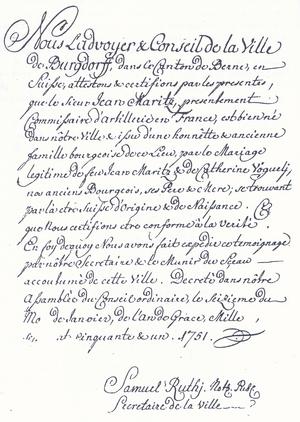
Jean’s birth certificate
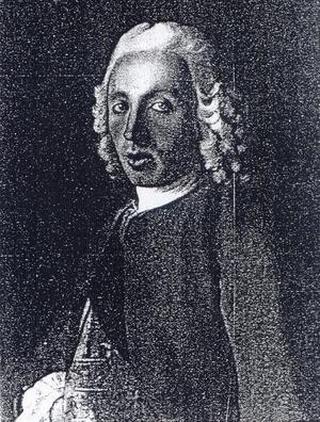
Portrait of Jean Maritz
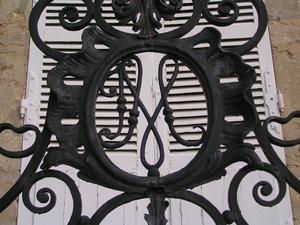
The monogram of Jean Maritz
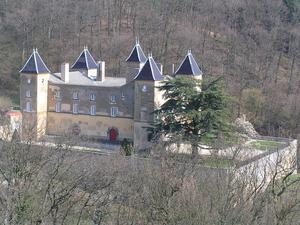
Barollière's residence
Antoinette Colabeau de Juliénas
The godmother is twelve years old : Antoinette Colabeau de Juliénas, is a young prestigious godmother for Jean Maritz’s bell. She is the granddaughter of Horace Vande de Saint-André, lord of Saint André du Coingt and of Limonest, adviser to the king at the "court of monnaies" since 1712, the year of his marriage to Marie Cholier, daughter of Pierre Cholier, prefect of the merchants.
It is also the daughter of Françoise Vande who married Jacques de Colabeau, lord of Juliénas et Vaux, a councillor at the “court of monnaies”, in 1737.

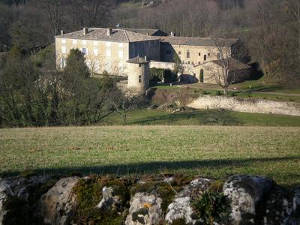
The castle of Saint-André in Saint-Didier-au-Mont-d'Or
Horace Vande de Saint-André is Lord of Limonest, but is the castle in the parish of Limonest au mont d’or or Saint Didier au mont d’or ?
In 1720 the question arose during the baptism of Horace son of Jean Girin, master valet at the castle ; the baptism took place in the chapel of the castle but it was necessary to mention it in the Limonest or Saint Didier register ? After having gone to Limonest where all these high society people (the Vande de Saint-André, Bollioud de Fetan - we will talk about it again, Cholier de Saint André) signed the register, we had to delete everything and go back to Saint Didier au Mont d'Or to do the same thing.
Let's go back to the little Antoinette who gave her name to this beautiful 600 kg, Jean Maritz may have had a wedding in mind, his little Charles-Henri, although a little too young for Antoinette, would make a beautiful wedding.
But Antoinette did not marry Charles-Henri ; seven years later she married Louis-Hector-Melchior-Marie marquis de Harenc de la Condamine, Lord of Ampuis.
She died at the age of 34 on November 10, 1772.
Judith Deonna Maritz de la Barollière
Judith Deonna Maritz de la Barollière, Jean Maritz's wife, also added her nobility ; she was born on June 5, 1717 ; her father, Gaspard, from Geneva, was a master dyer in Lyon. Like his father, Antoine, Gaspard returned to Geneva where he died on 13 March 1751.

Judith married Jean on November 10, 1735 in Satigny in the district of Geneva ; they had seven children, Laurence on August 6, 1736 (they didn't waste any time !) then Jean Gaspard on September 23, 1738, Charles on March 16, 1740, Charles-Henri born in Strasbourg on December 15, 1744, Joséphine Laurentine Jeanne Françoise born in Strasbourg on December 3, 1745, Louis-Jean born on March 1, 1748 and finally Jeanne Louise born also in Strasbourg on October 13, 1751.
On this day of June 22nd she is pregnant and is expecting a happy event for the fall.
Her life will be punctuated by births and family moves. After the death of her husband in 1790, she sold the Château de la Barollière on 18 October 1793 to settle with her son Charles-henry at the Château de la Rigaudière in Saint Julien where she ended her life in 1795, the 8 germinal year 4 at 4am.
Françoise Vande de Juliénas

Françoise Vande de Juliénas is Antoinette's mother, so let's see if you have followed ?
The daughter of Horace Vande from Saint-André, of course ! She was baptised on August 17, 1735 and married Jacques de Colabeau, Lord of Juliénas, on February 28, 1737 in Saint Nizier at Lyon.
Charles-Henry Maritz
Charles-Henry Maritz, the godfather is only 6 and a half years old, but already writes his name well. He was born in Strasbourg on 15 December 1744, and, like his brother-in-law Jean-François Beranger and his cousin Jean Maritz, he worked with the cannons, he became Commissioner of the Cast Iron Artillery, Captain of the Royal Spanish Artillery Corps and Bourgeois of Lyon.

In 1769 he married Françoise Sibylle Millanois de la Salle, daughter of Charles Millanois, bourgeois merchant of Lyon, secretary advisor to the king and treasury director of the Lyon currency.
The young Françoise Sibylle was six years younger than him, she was born on November 21, 1750, they had a daughter Jeanne-Marie who was born in Limonest on April 19, 1771. The end of his life in 1796 was terrible, since after having lost his mother on 8 germinal year 4, his wife died on 19 prairial year 4 and he, on 24 fructidor year 4 (10 September 1796), he is 51 years old.
Catherine Thérèse et Isabelle Deonna
Catherine Thérèse Deonna and Isabelle Deonna signed on the same line, nothing separates the two daughters from Gaspard Deonna. Catherine Therese was born on December 31, 1714 and Mary Isabel on December 22, 1715 ; on July 22, 1727 they entered a religious community where Catherine took her vows in May 1732 and Isabelle in May 1734.
The Deonna family, like the Maritz family, is Protestant and converted to Catholicism. The two religious sisters also signed for a baptism where their niece Laurence was godmother in Limonest in 1757.


Bollioud et Bollioud
Bollioud and Bollioud, like the Deonna sisters, the Bollioud go in pairs. They arrived with the Vande family ; Claudine, Horace Vande's sister married Claude Bollioud, Lord of Fétan, on 13 February 1703 in Saint-Nizier at Lyon. One can think that the two signatories are of two of his sons, François, lord of Chanzieu or Gaspard, canon or Marie-Horace, captain of the grenadiers.
The Bollioud's and the Vande's, is the name of rue Saint-Dominique (now rue Émile Zola) in Lyon came to Limonest for a stroll : this street was the place of origin of all these high society people, the same area and the same activity, they are all advisors to the “court of monnaies”.
Ten years later, on rue Saint Dominique, they probably met a Geneva tutor, yet another Geneva tutor like the Maritz or the Deonna, who worked for Sieur Mably, although this famous tutor, Jean-Jacques Rousseau, preferred to walk around Rochecardon rather than at Place Louis le Grand where gatherings were not always welcome.
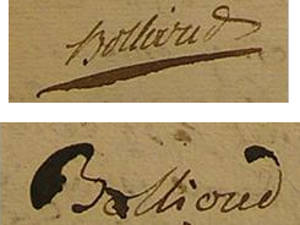
Laurence Beranger

Laurence Beranger was proud to use her married name: she is only fourteen years old but married Jean-François Beranger Donicourt de Roucourt who is 25 years old, on October 12, 1750 in the church of Saint Pierre de Vaise.
It was a beautiful marriage, which brought together the three great royal foundries, Douai, Strasbourg and Lyon ; because Laurence is Jean Maritz's daughter, he married his eldest daughter with his apprentice, who was also the master founder of Douai, he also succeeded in attracting Joseph de Vallière, lieutenant general of the King's armies, director and inspector general of artillery as well as Camille Perrichon, state adviser and former merchant provost. A beautiful wedding with a beautiful dowry.
For the wedding of her little sister Josephine in 1764 the dowry was 100 000 pounds. A beautiful marriage that ended in divorce, moreover, signs of changes, Laurence signs “Laurence Maritz de la Barollière” in 1757, on the register of a baptism in Limonest. However, they had have five children, including Jean-Laurent Casimir, who was born in 1759 at the age of 23. She ended her days in Paris on December 27, 1800.
Claude Bourricand
Claude Bourricand, ending in a d like the Bolliouds (although like the Dupond/t we also find Bourricants) and like the Dupond and Bollioud they go in pairs. Yet there is only one signature, why ?

The reason being thatÉtienne Bourricand, who cannot be absent, doesn’t know how to write. Indeed the Bourricands, it is finally the native people of Limonest who are there, they are very active in the parish : Claude is a light worker in charge of maintaining the lighting of the church, he also manages the finances, he is in charge of the “maintenance” of the parish ; Étienne is a church warden, in charge of the poor register, which is certainly managed by Claude because Étienne cannot write. They are wine producers like a good part of the inhabitants of the parish. In eight months Étienne will be dead, he will be replaced in his function by Antoine... Bourricand of course.
But Étienne Bourricand is not the only one who did not sign in person, Joseph Bresent or Bressan is also a parish light worker, his name is engraved on the bell, but he does not know how to write.
Joachim Charret

Joachim Charret, squire and lord of Grange Blanche also lives in rue Saint Dominique. He certainly knows the Vande’s and Bollioud’s but it was Jean Maritz who invited him, he is an arms inspector.
Moreover, the whole Charret family came to Laurence's wedding in Vaise the previous year.
Poor Joachim would not live as long as Étienne Bourricand after the ceremony, since he died on November 17, 1751.
Let's end with the clergy
Hilaire Bouchet Hilaire Bouchet was the parish priest of Dardilly since September 1729, he is the nephew of his predecessor Jean Bouchet, parish priest from 1698 to 1727. He often comes to Limonest, and the day before, he was already there for Antoine Damez de Dardilly's wedding with a girl from Limonest.

For him too, the days are numbered, “Hilaire Bouchet, priest, parish priest of Dardilly, after having governed with support of the parish for 29 years died on January 22, 1153“.
He died without having being baptised and was buried in the sanctuary of the church ; his nephew Anthoine Bouchet, vicar, temporarily replaced him before the priest Rey and he became the priest of the Tower.

Jean-Baptiste Delorme, after 24 years of vicariate was appointed parish priest of Limonest on December 22, 1739, he will enjoy the magnificent bells for 18 years until his replacement by the priest Jothié.
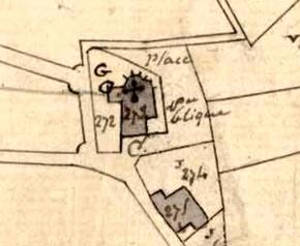
Plan of the church of Limonest
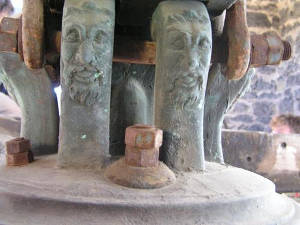
The handles of one of the bells
1751, epilogue
After a beautiful wedding and ennoblement, 1751 began as a prosperous year for the Maritz’s. After the beautiful bell blessing, Charles-Henry and his sister Marie Laurence and Josephine were to be godfather and godmother to Charles-Henry Chapiron son of Benoît Chapiron, property manager of the Lord of La Barollière, baptised on December 26, but on that date they were in Strasbourg “with their dear father and mother in the service of his majesty for the royal founderies” and Christmas was very sad, little Jeanne Louise lived for only two months and was buried on December 13, 1751.
The year ended terribly.
Marie-Louise et Blanche
In 1873 two new bells joined Antoinette, Marie-Louise and Blanche to keep her company and rang in concert with our dear old Antoinette, they were both smaller and came from the Burdin Aîné workshops.
As always the parish carries out a baptism ; 122 years after the previous baptism, godmothers and godparents are still chosen from the elite, but this time no children are chosen, and the two young bells are not recorded in the parish baptismal register.
The “Marie-Louise” bell
Marie-Louise Albane Gaillard

The godmother of the biggest bell is Marie-Louise Albane Gaillard, she was born in Givors on 7 December 1826 ; her father, François Joseph Neuvesel, is “owner of glass factories and a glass manufacturer in Givors” and 140 years later, her name will be associated with those of Boussois and Souchon to create BSN which will become BSN-Danone in 1973, a good example of vertical diversification.
At the age of 7, poor Albane lost her mother Irma Fleurdelix, a worthy name by Goscinny and Uderzo. Why, then, is this daughter of a glassmaker and a real Gallic woman, born in Givors, the godmother of the Limonest bell ? I ask you the question !
Because on August 17, 1846, still in Givors, she married Joseph Gaillard who lived at 9 place Bellecour in Lyon. Of course ! Of course ! It all makes sense! But who is Joseph Gaillard anyway ?
He is the son of Sophie Adèle Antoinette Baboin de la Barollière and therefore the owner of Château de la Barollière in Limonest. Last time, Jean Maritz had chosen his son as godfather, this time we have the Lord's wife as godmother. Marie-Louise Albane gave four daughters to François Joseph ; the next owner of the castle will therefore not be called Gaillard but Neyrand, first name being Eugène-François, husband of Marie-Félicie Gaillard, originally from Saint-Chamond and master of the forges. The Gaillard family lived in Oullins where Marie-Louise Albane died on April 14, 1877, her husband followed her 11 years later.
Gabriel Gonin
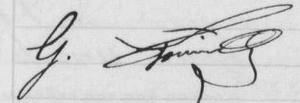
Gabriel Gonin is the bells godfather, he is not a child either, he was born in Lyon on January 31, 1811 and he bought Sandar castle in 1842, but he then lives at Place Louis le Grand (Bellecour) like the Gaillards.
In his 6-room apartment on the 2nd floor of 1 Place Louis le Grand, he lives with Clotilde Tardieu, daughter of a drugstore merchant, whom he married on June 22, 1836, their two sons Émile and Amédée and two servants.
Their building is very commercial :
On the ground floor there is the Buisson-Roman chemist, the lemonade maker Bauzer, a milliner Miss Chaquet and Jacques Giraud, a gaiter merchant.
In the early 1860s, after having undertaken some work on the castle, they settled in Limonest ; the castle was large and heavily staffed :
Jean Berger, born in Dardilly, is a chambermaid ; Jean-Marie Peyon is a servant, he lives in the castle with his wife Louise and his daughter Claudine ; Euphrasie Besset is a cook ; Césarine Daligand is a maid ; Pierre Souput is a servant like Jean Simon, born in 1845 in Limonest, and finally his younger brother André Simon is a shepherd.
In 1861, he offered the parish the land of the former telegraph tower at the top of the Route de la Garde, to erect the superb mission cross, offered by Claude Bourricand, which can still be seen.
In 1873, the two sons grew up, Émile married Louise Vénogel and they lived in Sandar with their daughter Léonie born the previous year ; Amédée is 25 years old, he is still single and will remain so, he is a great furniture collector and he will donate his collection to the Musée des arts décoratifs de Lyon.
The following year, Gabriel will lose his wife, he will survive her twenty more years. When he died, the castle was sold to the Brothers of the Christian Schools.
The “Blanche” bell
Blanche Augustine Lucie Roux de Bézieux

Blanche Augustine Lucie Roux de Bézieux was born on September 1, 1835 in Cognin-Maleval, in the Isère region of France, where her father Auguste Pierre de Bézieux is mayor, she is the godmother of the “Blanche” bell
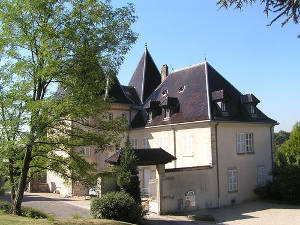
The castle of Sans-Souci
In 1856 she married Claude Aymé Henri Roux in Grenoble, the latter being a widower and twenty years older than her, her mother being Marie-Benoîte Frèrejean ; does this name mean nothing to you ?
We find the family of the bell and cannon founders come from Saint-Cyr-au-Mont-d'Or, Marie-Benoîte is a copper merchant and a foundry entrepreneur, she is Antoine Frèrejean's granddaughter.
Claude Aymé is a blacksmith, his grandfather bought the castle of Sans-Souci in Limonest in 1806 and his first wife Antoinette died there in 1852.
But the family does not live in the castle, their home is... place Bellecour of course where last year the little Marie-Aimée was born on April 24, she is the fourth child and has one brother and two sisters. Blanche was to live a long time, until 1922.
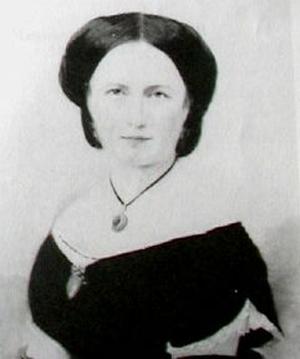
Blanche Roux de Bézieux
Claude Antoine Boin
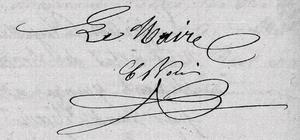
The godfather, Claude Antoine Boin, has been mayor of Limonest since December 1866, he replaced Pierre-François Décurel who gave his name to the church square ; he is the brother of the last postmaster at Limonest, Jean-Claude Boin with whom he lived, not that long ago ; but since the transfer of the national road by Lissieu and the competition from the railway, the horse post office has no longer any activity and the relay will be closed in 1870.
Jean-Claude, his wife Caroline and their son Charles will leave Limonest. In 1873, Claude-Antoine lived with his servant Benoît Cimetière ; in the Journal de Lyon of 29 March, he was mentioned for a position as general councillor.
At the beginning of 1876, he left for the south, perhaps to attend the Nice carnival and take part in the first flower parade on the Promenade des Anglais, or to visit the lemon festival in Menton, he would stay there permanently, because he died in Menton on February 15.
Claude Fuché, Deputy Mayor, will temporarily replace him, it is the second time in ten years that he has performed this function for the same reason, the death of the current Mayor.
The baptism of the two bells
Of course, the priest Michel Badoil participates in the ceremony of the baptism of the bells, he was born in Saint-Symphorien-sur-Coise on August 28, 1808, his father Claude was a shoemaker. On January 20, 1891, he was 82 years old, he would hear his clock ring at one o'clock in the morning, this first hour of the day would be his last, he had left to join his heavenly father ; the priest Jean-Pierre Chabert would replace him.
In 1873, his vicar Charles Genin assisted him in his ministry, he was born 36 rue Bourgchanin (now Bellecordière) in Lyon on December 1, 1840, he was replaced at the end of the 1870s by Félix Rambeaud.
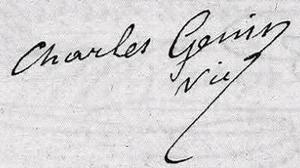
Burdin Foundry
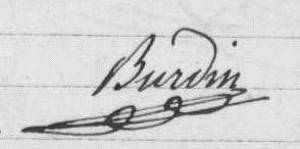
Finally, let's talk about one last character :
Jean-Claude Burdin, he was born in Lyon in 1823, in a family of bell founders and presides over the destiny of the Burdin Ainé company. The foundry is located at 22 rue de Condé in Lyon where he lives in a three-room apartment on the mezzanine floor.
Burdin bells are well sold throughout France but also in Algeria and Canada. In 1874 Jean-Claude Burdin installed fourteen chiming bells in front of his workshop in the Sainte-Croix church, he was vey proud of it and, perhaps by heavenly punishment for his vanity, would not be completely paid : he must have heard the chiming every day, reminding him of his humility.
The company ceased to exist after the 1914-1918 war, after having redone the bell chimes at Lyon's town hall.
Memories of a “bell-ringer”
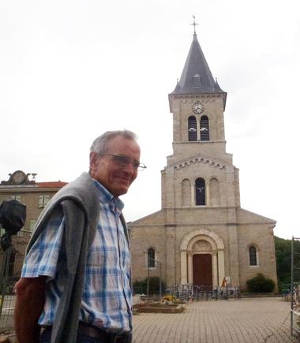
Pierre Uliana, was born in 1941; his father, Antoine, had been a priest since 1937, in return for the rent of a small apartment without water, he was in charge of the church.
From the age of 7 to 20, Pierre helped his father before the bells became electrified.
“Every day, it was necessary to ring the Angelus, at 7am and 7pm, the prayer was punctuated by 3 times 3 strikes then 12 bell rings. The hours were struck thanks to the mechanism. On Saturday evening we lifted the two stone weights, situated in a booth at the top of the bell tower, I still have in my ears the sound of the tac, tac, tac of the crank that allowed us to wind the rope to lift the stones”.
“On Sundays, we rang the 3 bells for the mass, with a rope in each hand and a rope with a ring passed around the foot; the bells were rung for half an hour and then five minutes before the mass; it was necessary to pull three times the right one, then three times the left one, once at the right, once at the left, again on the right and finally the big bell in the middle”.
“We also announced funerals, first, middle or upper class. For weddings we rang the big bell continously ; and for Easter, it was the same for the three bells. There had to be three of us : the country guard (Father Revol) came to help us or Father Bost, gardener at Gignoux's, once Mr. Trombetta, the shoemaker, came, but he was too small. Only once did my father ring the bells in this fashion for a baptism, it was for my brother Christian, born in 1951.“.
“In the church it was also necessary to heat the coal stove. Emilia, my mother was the cleaner ; the Nativity scene was being prepared for Christmas. From the age of 6 I was an altar boy ; every day there was Mass, Miss Bourriquand, then Town Hall Secretary was present. Miss Baron, a teacher at Saint-Martin school, was always present. On Sunday Gaston Boustugue, the mayor or Christian Machet played on the harmonium”
Michel Matray
Jean-Loup Barbier

